All products featured are independently chosen by us. However, SoundGuys may receive a commission on orders placed through its retail links. See our ethics statement.
Best cheap headphones
June 20, 2025
If you’re a frequent visitor, then you already know that headphones come in a wide range of prices. Even headphones that are considered “cheap” can range from $20 to a few hundred. But what are the very best cheap headphones? As you might imagine, our picks for the best cheap headphones tend to offer more and better features, such as active noise canceling, as we go higher in price, but you might be surprised at the quality of the audio you get even at lower prices.
What's new?
- This article was updated on June 20, 2025, to change format, picks.
- This article was updated on December 12, 2024, to correct outdated information.
- Looking for something more compact? Check out our list of the best cheap noise canceling earbuds.
Take SoundGuys’ quiz to find your best fit
The Quick Answer
Check out our picks below for a quick guide to the best cheap headphones that suit your needs. Each has a link to the full review to answer any question you could have.
The best overall:
Our on-ear pick:
Our sound quality pick
The best features:
Value pick:
The in-depth answer
The following is coverage of cheap headphones that have been tested with the same methods as we test high-end headphones. Each pick will have something to offer that is uncommon for the price bracket.
The best cheap noise canceling headphones are the JLab JBuds Lux ANC


The JLab JBuds Lux ANC are an excellent choice for the best budget headphones under $100. For the affordable price of $79.99, they offer outstanding value by nailing the fundamentals. These over-ear headphones have a comfortable fit with deep padding and a breathable headband. The build quality is decent, with the headphones able to fold up compactly for travel. While they lack an IP rating for water resistance, the sturdy construction can likely handle some sweat or light splashes.
The JBuds Lux ANC provides effective active noise cancelation that significantly reduces ambient noise, especially in the higher frequencies. The sound quality is quite good, with a crowd-pleasing tuning that should fit most people’s needs. An app allows customization of the EQ as well should there be something you’d like to tinker with. Battery life is excellent at over 44 hours per charge. USB-C charging with quick charge support is a premium feature at this price point — as is the audio over USB feature. Call quality is perfectly adequate for a Bluetooth headset in all but the windiest conditions.
The JBL Tune 520BT covers the basics for less than $100
On-ear headphones get a bad rap, but for those who like the form factor: there’s a lot to like about the JBL Tune 520BT. These headphones have absurd battery life, an inoffensive sound, and decent features for the price point.
Though they don’t offer ingress protection, noise canceling, or even a conveniently-placed charging port, the performance of these headphones speaks for itself. On top of that, the simple design means that the JBL Tune 520BT will be satisfactory to most.
The Audio-Technica ATH-M40x has great sound quality
The Audio-Technica ATH-M40x is the overlooked little sibling of the ATH-M50x, but don’t knock the ATH-M40x out of the running. The ATH-M40x is designed with functionality in mind and costs less than $100. From enthusiasts to professionals, this pair of Audio-Technica headphones will satiate any hi-fi appetite.
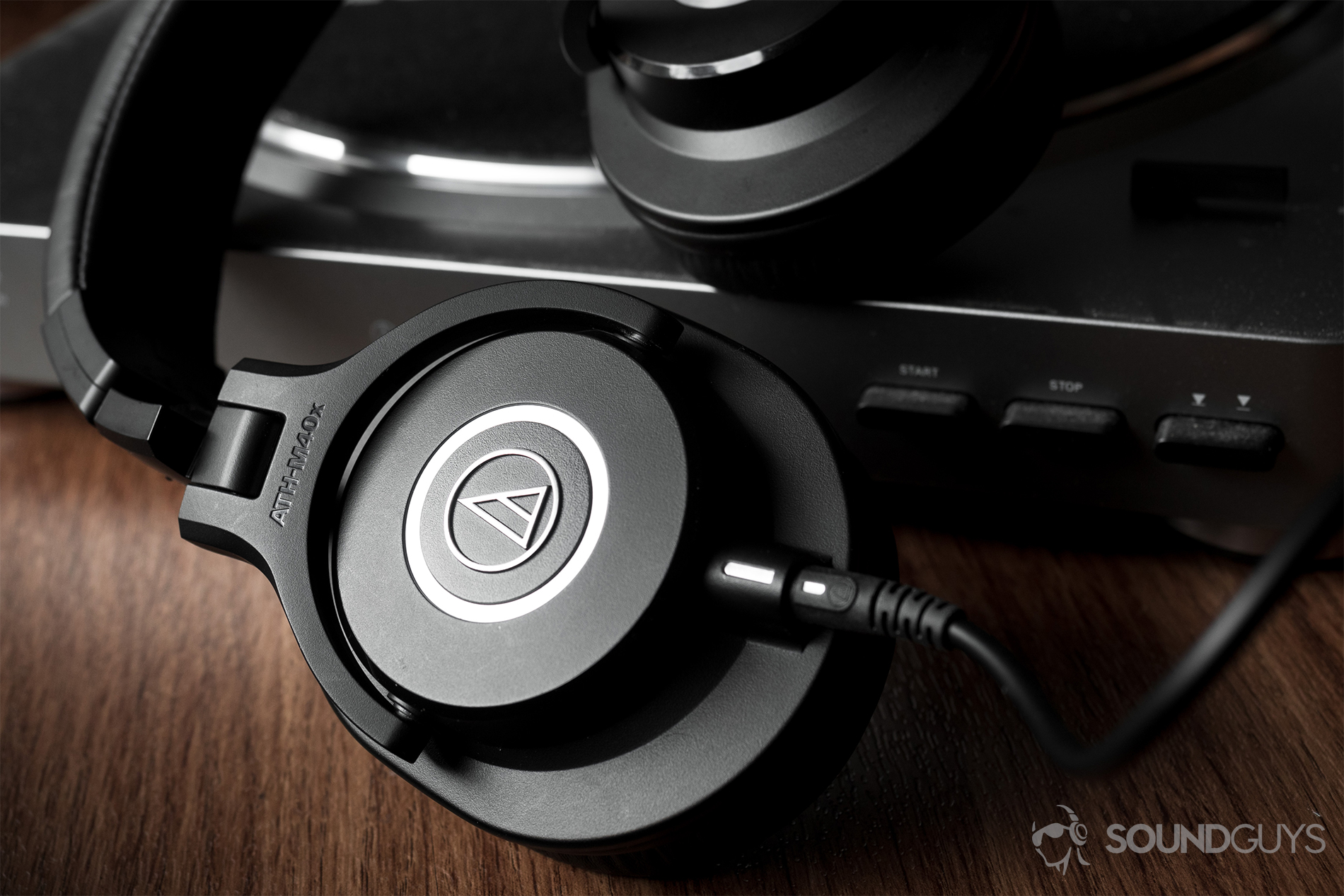
As far as sound is concerned, the ATH-M40x has a less obvious difference between bass and midrange compared to the more expensive ATH-M50x. This kind of sound is good for all kinds of music and mixing alike. The treble response is more emphasized on the ATH-M40x than the ATH-M50x, but you can pretty easily EQ this from a desktop or mobile app.
The Anker Soundcore Space One brings luxury features at a budget price

The Anker Soundcore Space One headphones offer high-end features at an affordable price, boasting strong noise cancelation, a companion app for customization, long battery life, and Bluetooth 5.3 with LDAC support. At $99.99, they provide excellent value, especially with their impressive 40-hour battery life with ANC on. However, they lack touch controls, have an over-emphasized bass and treble, and come with a cloth case rather than a hardcover. Their plastic build might feel less premium up close, but the design is lightweight and comfortable.
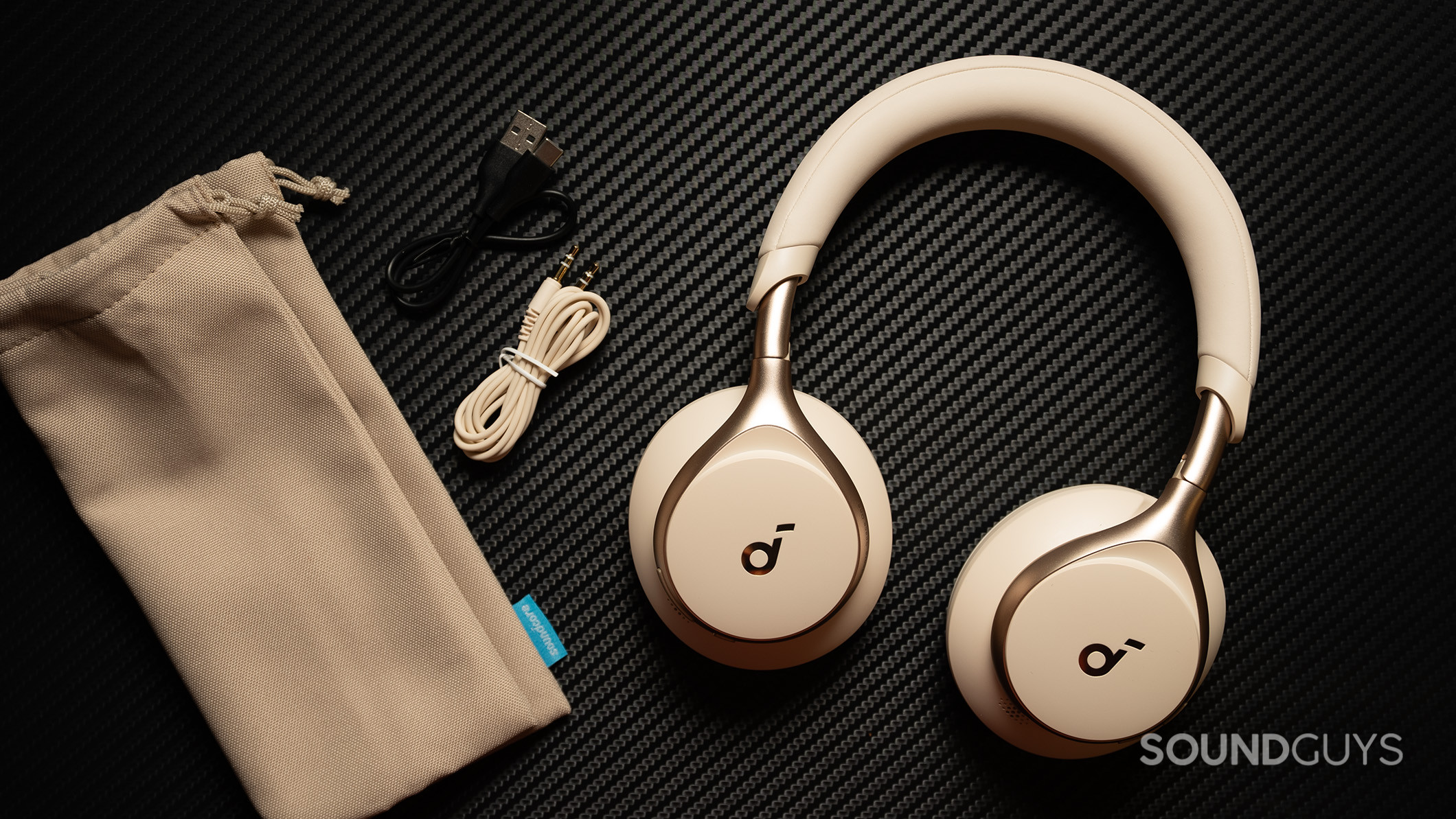
The Soundcore app enhances the experience with EQ customization, firmware updates, and more. With good connectivity options, including Bluetooth 5.3 and multipoint pairing, they lack USB audio but support fast charging. Additionally, the Anker Soundcore Space One headphones feature wear detection, automatically pausing your music when you remove them. Ideal for those seeking affordable noise canceling headphones without sacrificing features and sound quality, the Anker Soundcore Space One stands out for its balance of cost and performance.
The Edifier W830NB is the best bang for your buck

Sometimes it’s difficult for us to make a definitive recommendation because there are multiple products that perform very well, and none that really set themselves apart by a large margin. The Edifier W830NB could have been our top pick, if not for the fact that the JLab headphones are often less expensive, offer USB-C audio, and are slightly more comfortable. Additionally, it’s possible that the fluid tariff situation might affect the price of the Edifier headphones in the United States. That’s really all that separates these models, so you can’t really go wrong with either.
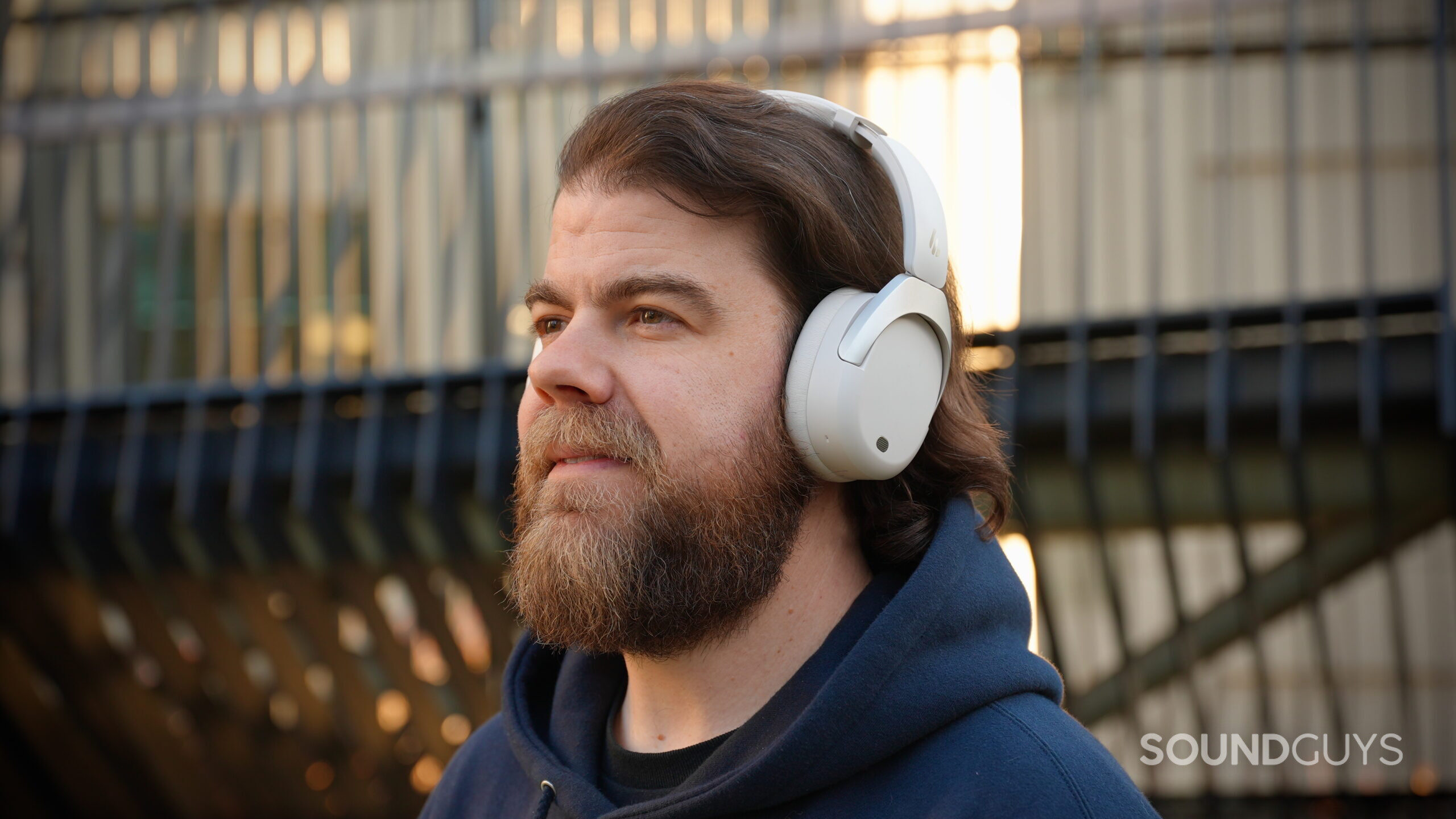
The Edifier W830NB offers decent sound quality and decent noise canceling at a relatively low price of $79.99. Many users write in to tell us to include these headphones on our best lists and it’s not hard to see why: there aren’t many noise canceling headphones with this combination of price and performance. While you won’t get the raw attenuation power of something like the Sony WH-1000XM6, you will get a decent amount of noise attenuation on an extreme budget.
The best cheap headphones: Notable mentions
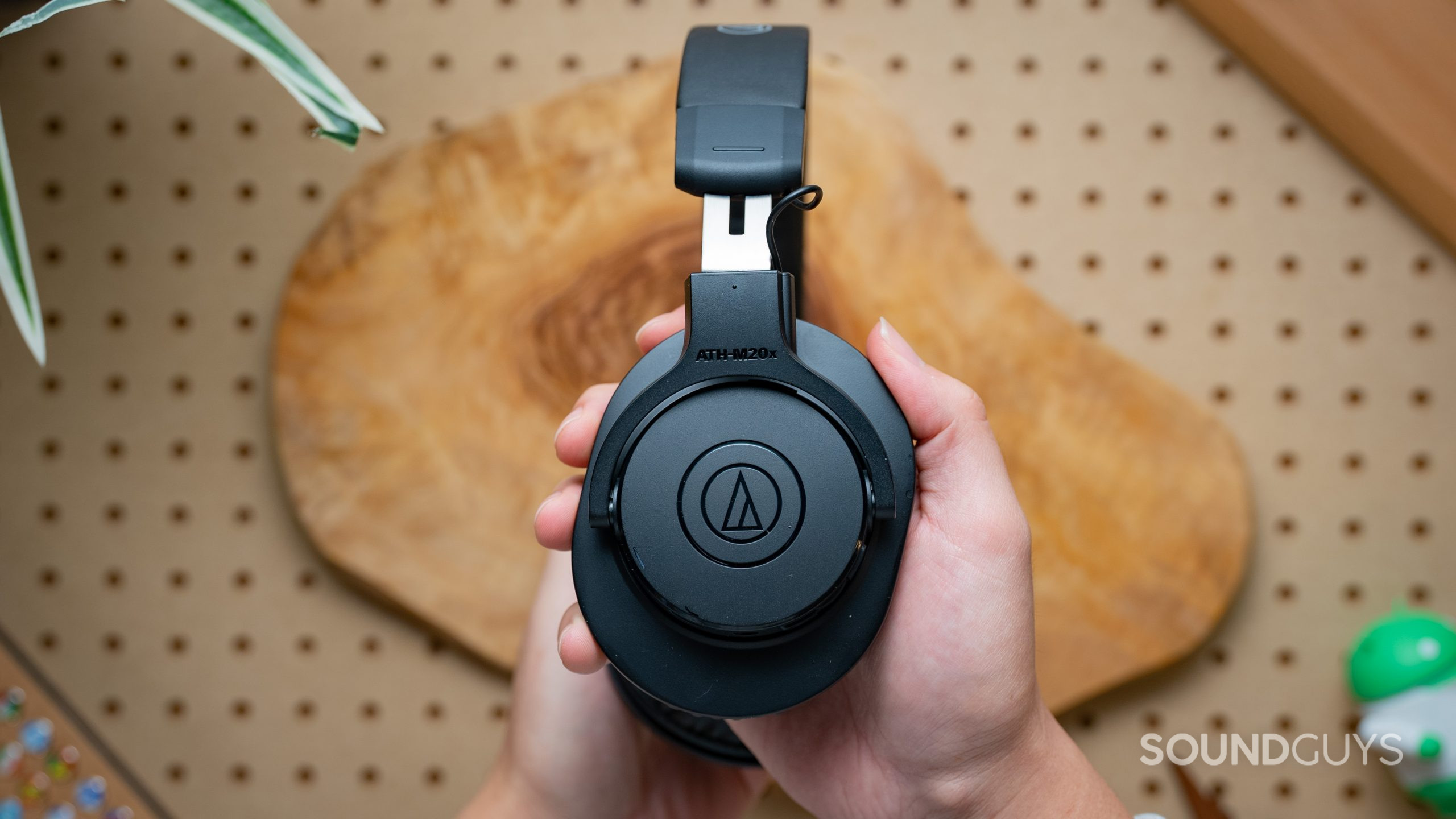
- 1More Sonoflow SE($54.99 at Amazon): These are packed with many of the same desirable features found on their more expensive counterpart, the 1MORE SonoFlow. While they likely won’t be your last set of over-ear headphones, they offer decent ANC and plenty of EQ options. Along with a comfortable fit and affordable price, they’re a good choice for any listener on a tight budget.
- Anker Soundcore Space Q45 ($149 at Amazon): Stretching the limits of what you might call “cheap,” this headset feels pretty premium with LDAC codec support, Bluetooth 5.3, and a long battery life with okay ANC. Its sound hampers the Q45 from the Best list.
- Audio-Technica ATH-M20xBT ($79 at Amazon): For the person who favors a less overly hyped sound but also wants the flexibility of Bluetooth or wired listening, you’d be hard-pressed to find another to fit this niche.
- Beyerdynamic DT 240 PRO ($67 at Amazon): Maybe you really liked our description of the Audio-Technica ATH-M40x but didn’t like the look of the headphones. Well, the Beyerdynamic DT 240 Pro is the answer to your sleek studio headphone desires. It’s comparable to the ATH-M40x in nearly every way, but this is a slimmed-down, on-ear version.
- Edifier W820NB Plus ($69.99 at Amazon): The Edifier W820NB Plus offers a comfortable fit, decent sound, and plenty of features for the casual listener on a budget.
- Grado SR60x ($99 at Amazon): If you want a smaller set of open-back cans, this builds off the back of a legendary pair of headphones at an entry-level price.
- JBL Tune 520BT (£33.11 at Amazon Site): These are excellent on-ears, and very affordable, too.
- Koss Porta Pro ($59 at Amazon): The nostalgic crowd loves this portable pair of headphones. If you don’t want to overspend, this is a great option that goes on sale. The headphones are semi-open, though, so despite the portable build, they won’t sound the best while commuting.
- Marshall Major IV ($116 at Amazon): As both a wired and wireless on-ear headphones solution, it’s unique with a somewhat hyped bass and treble sound. It’s surprisingly comfortable for on-ear headphones. Don’t expect much isolation, though.
- Sennheiser x Drop HD 58X Jubilee ($149 at Drop): This could have taken a spot on our list if it wasn’t for the sporadic availability. But if your main concern is sound quality, this is worth picking up.
- Sennheiser HD 280 Pro ($87 at Amazon): Marketed as a studio headphones solution, the HD 280 Pro sounds pretty good with a little more bass than most studio headphones. It’s pretty plasticky but gets the job done.
What you should know about the best cheap headphones
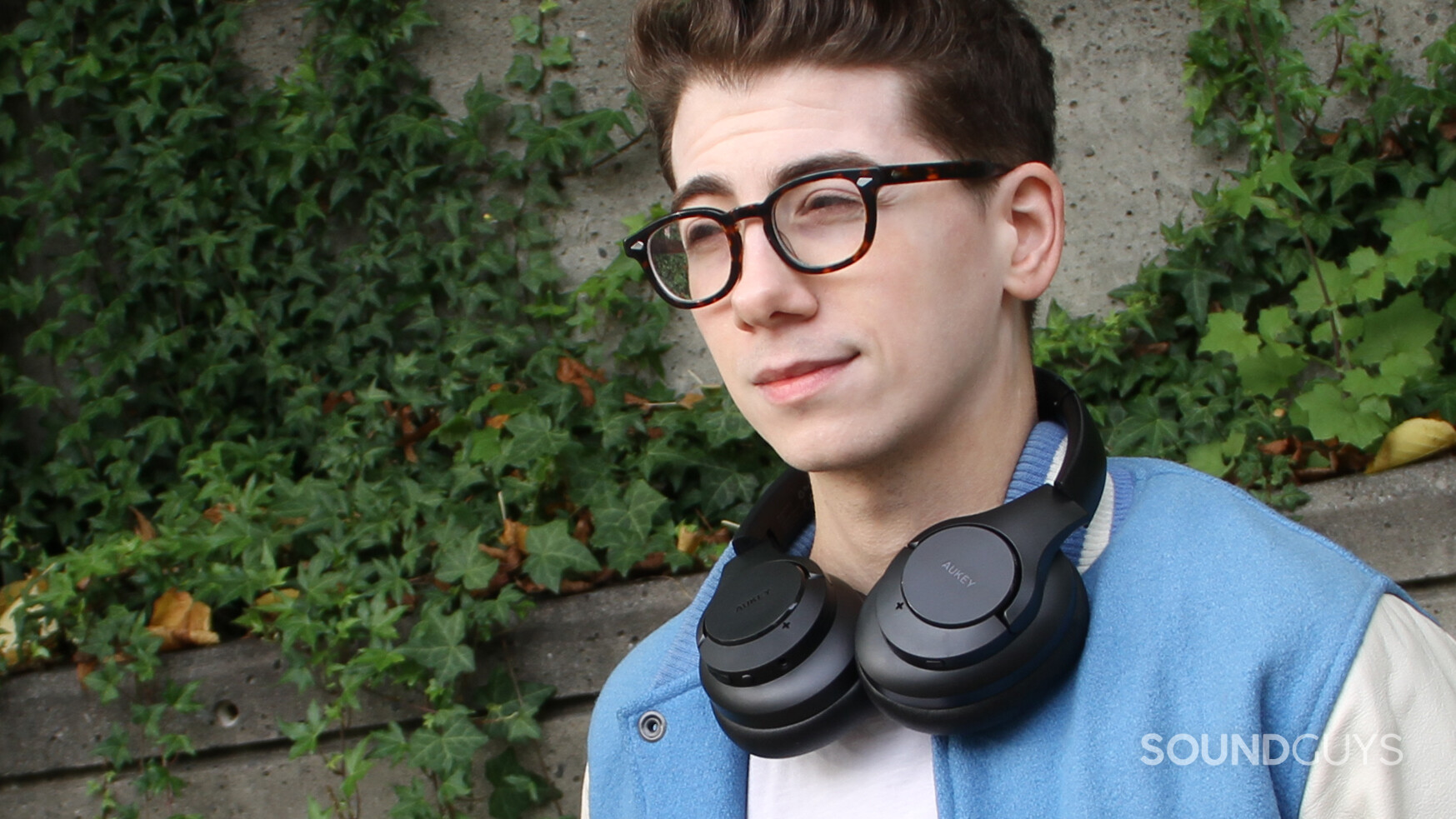
Something to ask when looking for cheap headphones: What can you do without? Most folks are in the habit of looking for “the best” — heck, we have a scoring system and many articles outlining the very best — but you’re not going to get flagship headphones cheaply. So, begin by whittling down your options and compromising on the luxuries you don’t necessarily need. For example, if you mainly listen to podcasts, you probably don’t need the most accurate sounding frequency response, but if you listen to those podcasts on a train, you probably do want some noise canceling.
Build quality is one of the first things you’ll sacrifice with cheap headphones. That doesn’t mean that all or any of these products are particularly prone to breakage, but it does mean that they lack premium materials.
Look for headphones that satisfy the essential qualities that make sense for your needs, rather than chasing features you don't need.
Additionally, with most cheap headphones, what you buy is what you get, but this can be a good thing. There aren’t any frivolities accompanying your purchase. You’re not getting any celebrity endorsement marketing or especially fancy carrying cases. Your purchase doesn’t rely on gimmicks. The Jabra Elite 45h has custom EQ capabilities, a premium feature unavailable on some of the priciest headphones out there, so you do get something. Still, you’re not getting everything in one package.
Hardware features aren’t going to be especially apparent, either. For instance, some headphones receive water-resistant treatment, but cheap ones rarely do. That’s fine since we’ve gone decades without it, but it does mean that you’ll have to be more careful with your cheap headphones, especially around water. Moreover, the passive isolation will be less effective with these picks than with something like the Sony WH-1000XM5, which is outfitted with top-end dampening materials.
Have fun with your cheap headphones
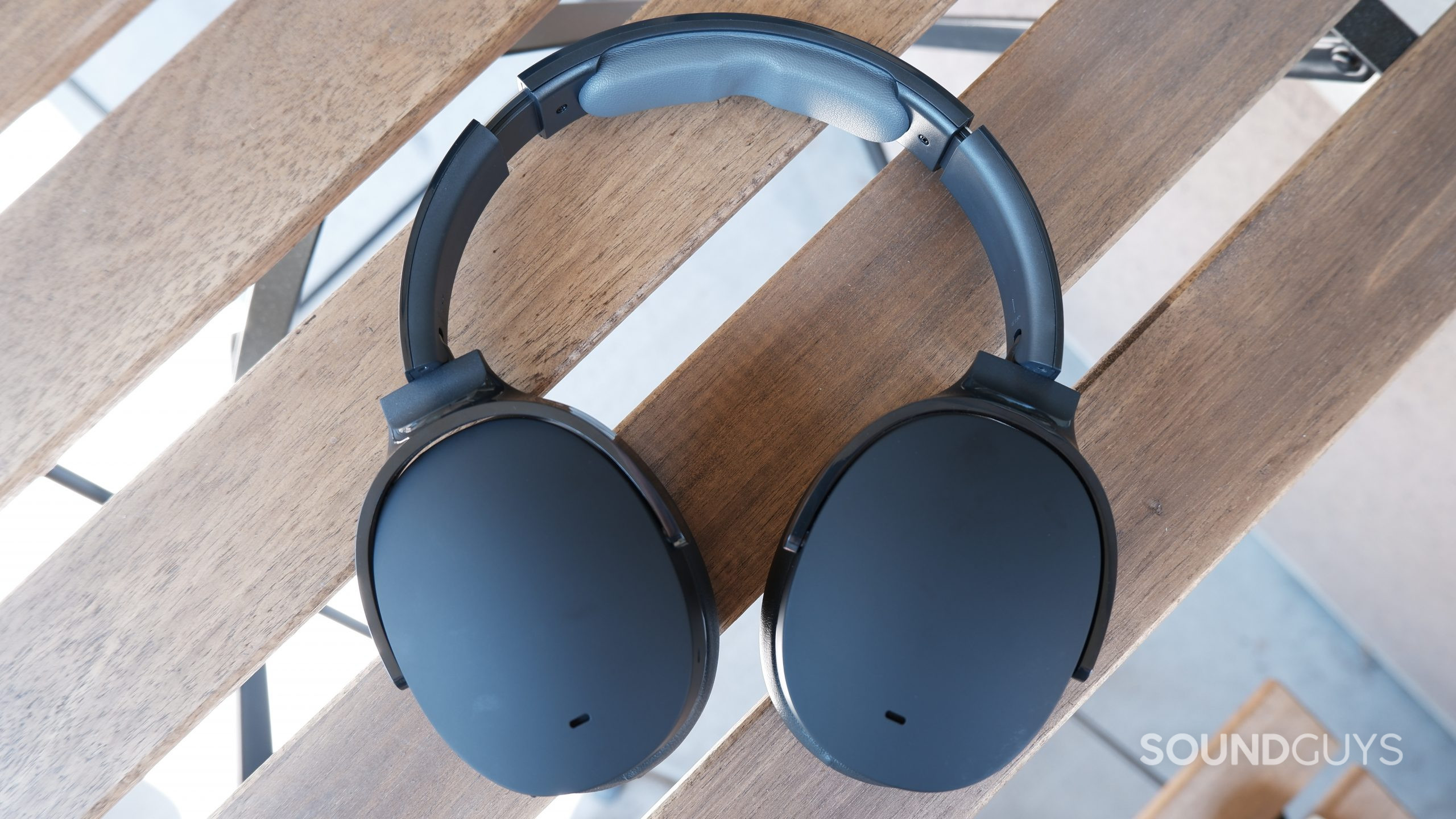
It may sound like we’re saying you can’t get good headphones for cheap, and it’s going to be all about compromise, but there are upsides. Getting cheap headphones means you don’t necessarily have to break the bank to try a new-to-you brand or a type of headphones you’ve not had before. Maybe you want a pair of super bassy headphones to compliment your collection, then pick something cheap and full of low-end emphasis.
You can take these headphones on your travels and not concern yourself with pampering them as you might with pricey headphones. Not to suggest your headphones are meant to be disposable, but whatever you choose does not have to be the last set of headphones you ever try, so don’t fret and have fun with it.
If you like the idea of cheap headphones but want something a little more compact and portable, check out our list of the best true wireless earbuds under $50.
What does frequency response even mean?
Loading chart ...
Another thing you should know is what we mean when we say “frequency response:” It just refers to which audible sounds the headphones emphasize. Some brands, like Beats, are known for heavy bass emphasis, while others go for a more accurate frequency response.
Are wired headphones really better than Bluetooth wireless headphones?
Yes, wired headphones transmit lossless audio, something that Bluetooth can’t yet do. While Bluetooth has come a long way since its inception, using it for audio data transfers thanks to Bluetooth codecs, it still isn’t up to snuff with a good old-fashioned pair of wired headphones. If you stream from Spotify or YouTube Music, you might not notice a huge difference.
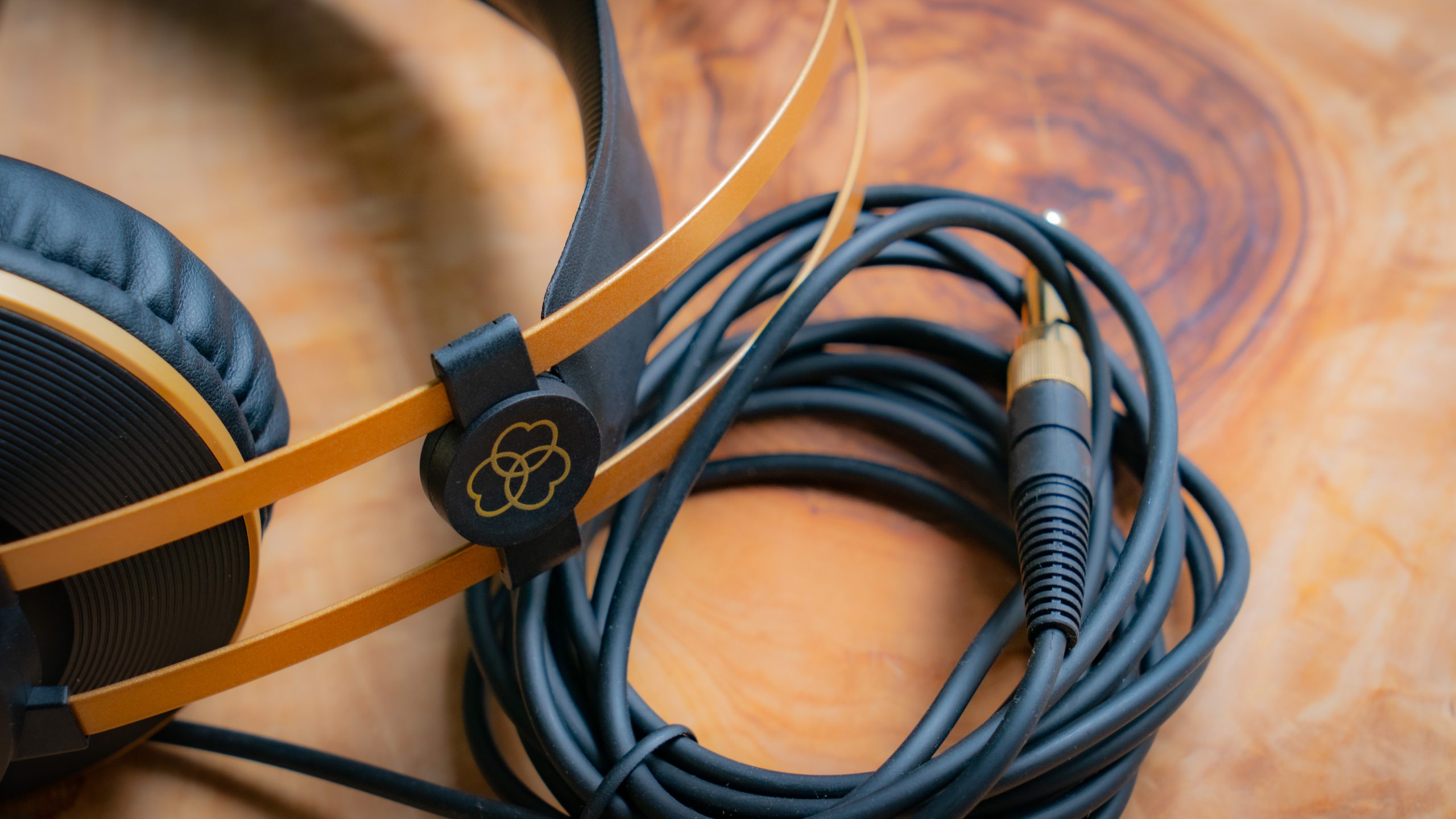
The simple thing to remember if you operate in the iOS universe is that you want the AAC Bluetooth codec. Every iPhone plays best with it and defaults to it when available. Android users can benefit from higher-quality codecs like aptX, aptX HD, and LDAC. Lastly, SBC is the lowest common denominator. The trouble for Android users is that cheap headphones are more likely to have AAC and SBC codecs and nothing else. Occasionally, this means Android users will probably encounter latency, whereas iPhone users don’t.
Bluetooth data transfer is capped off, and while that cap is sure to increase in the future as the tech gets better, wired headphones are just able to handle more. Of course, this is all technically speaking because chances are you wouldn’t be able to hear the difference in sound quality anyway unless you have perfectly trained, youthful ears.
Should you get on-ear or over-ear headphones?
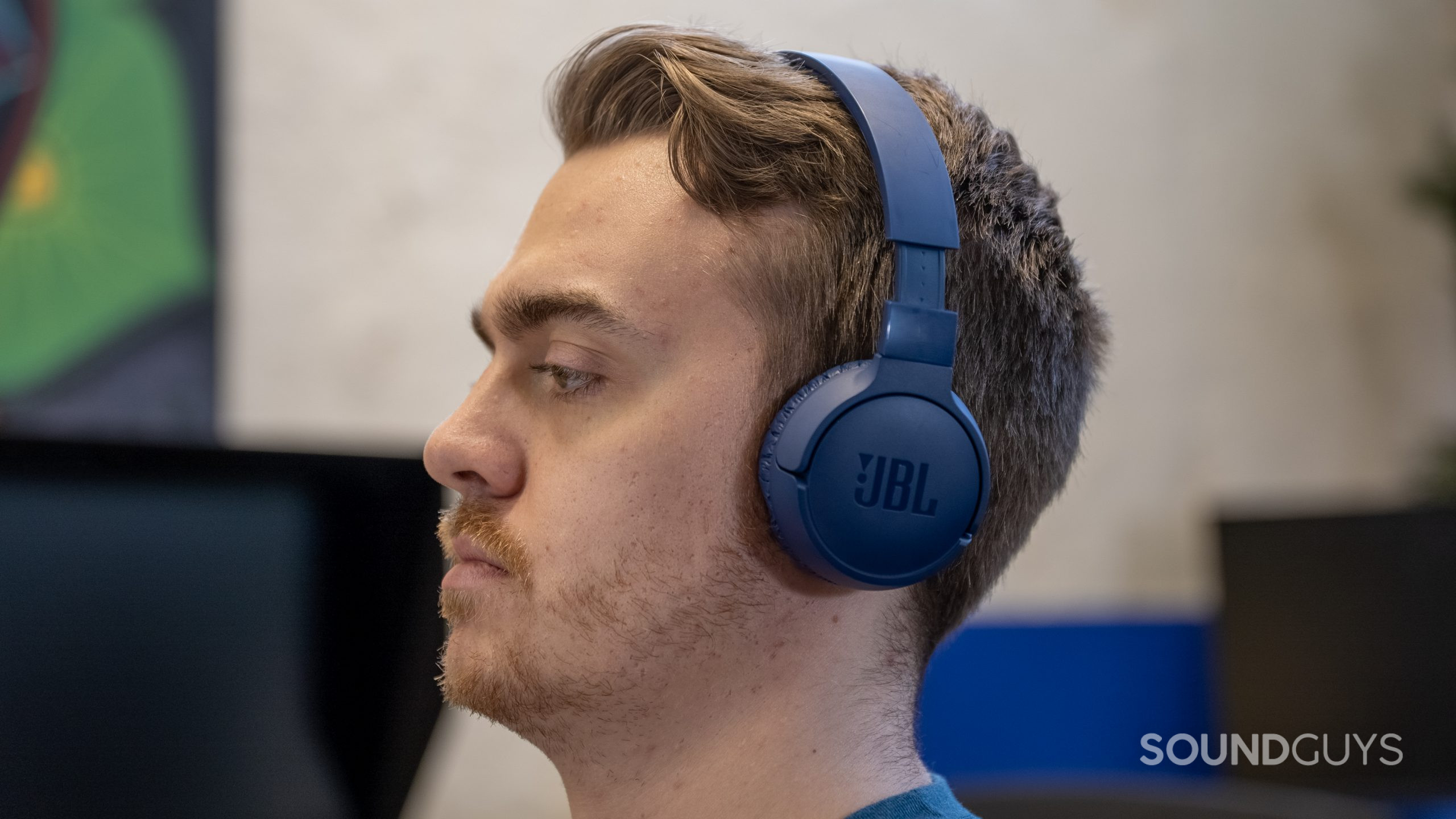
While it’s true that on-ear headphones typically are easier to stow away and portable thanks to their smaller size, they come with some concessions. For instance, while not universally true, as in the case of the nice fitting Grado SR60x and the Marshall Major IV, typically, on-ear headphones are less comfortable and exert greater clamping force than over-ear headphones. People with glasses will especially notice that when the on-ear headphones’ pressure pushes their ears against the arms of their glasses. Still, if comfort is important and so is portability, Koss figured that out with the Koss Porta Pro and its adjustable clamping force.
Additionally, by virtue of the on-ear headphones creating a seal by pressing the ear padding against your ear rather than around the ear, on-ear headphones provide worse isolation than their over-ear counterparts. Sure, some on-ear headphones have ANC, but you’re not going to get great overall noise canceling with on-ear headphones compared to over-ear headphones.
Why you should trust SoundGuys

This site is each of our day jobs, and collectively, we have years of experience in the audio industry. None of our writers benefit from pushing readers in one direction or the other; all we want is to arm you with as much knowledge about a potential purchase. Ultimately, we want you to be happy.
Our site does make money from referrals, but writers are paid for our research and writing, not if someone clicks a “buy button.” The only way we know we’re doing a good job is because… well, we still have jobs.
How we choose the best cheap headphones
Our day job is to test and review headphones, and we’ve been at it for over a decade now. We test cheap headphones and expensive headphones alike with the same battery of tests so we can compare every set of headphones fairly. Using an anthropomorphic test head, we can test how well headphones and earbuds would work for a human head.
- Using a standardized protocol, each product is level-matched and its fit to the test head validated.
- Several test tones, sweeps, and samples are played back through the devices being tested, and their output recorded. The output is then analyzed for several performance metrics, such as frequency response and distortion.
- ANC is tested by measuring 90dB of pink noise played over speakers three times: with the headphones on the head and ANC on, with ANC off, and with the headphones off the head. The curves are then compared.
- We test battery life by level-matching the output of the device under test (DUT) and playing a sample file containing real music until the battery exhausts.
- Other features are considered for their usefulness and convenience.
We use our experience and expertise to help sort which products perform well and which ones don’t. We try to cover a wide range of needs with our lists so that there’s at least one pick that should suit common use cases.
Frequently asked questions about cheap headphones
It’s true sometimes you want something physically smaller like earbuds, so here are our picks for cheap noise canceling earbuds. Some of our headphone picks include noise canceling, like the Monoprice BT-600ANC and Anker Soundcore Life Q20. If noise canceling is your main criterion, we have some selections. That should get you started.
While headphones can range from as low as $20 to several hundred, $200 is considered a mid-range price. You can find some of the best-sounding headphones under $200, like the AKG K371, which offers a transition from consumer audio to hi-fi audio.
The Audio-Technica ATH-M40x is a standout choice for under $100. Designed with functionality in mind, it offers a sound profile suitable for various music genres and mixing, making it a favorite for both enthusiasts and professionals.
The Anker Soundcore Life Q20 stands out in this category. Priced under $60, it offers decent active noise canceling, comfortable wear for extended listening, and an impressive battery life of over 51 hours with ANC on.
Yes, even budget noise canceling headphones can be effective. For instance, the Anker Soundcore Life Q20, priced under $60, offers commendable noise canceling, especially considering its price point. However, while they can reduce low-frequency noises, they might not be as effective as their pricier counterparts.

